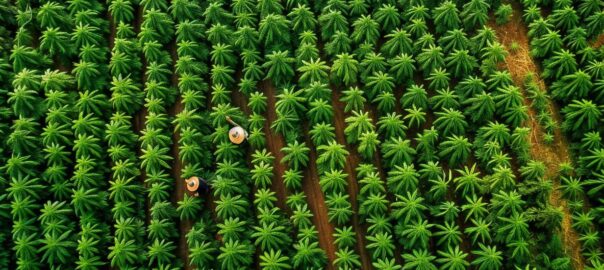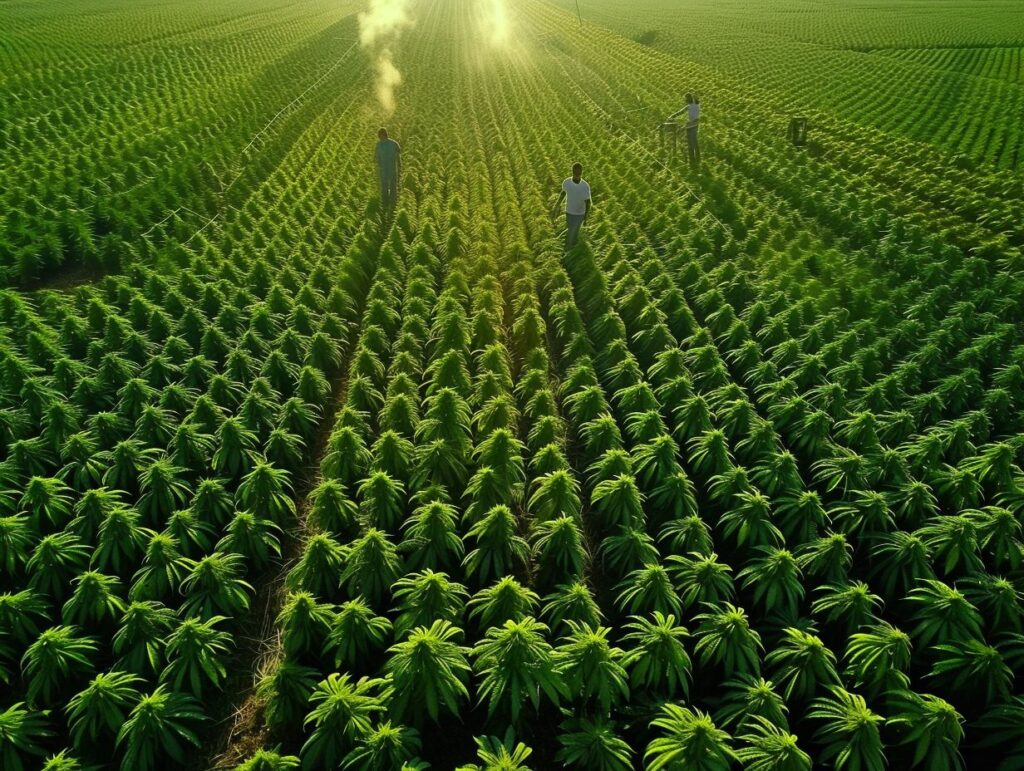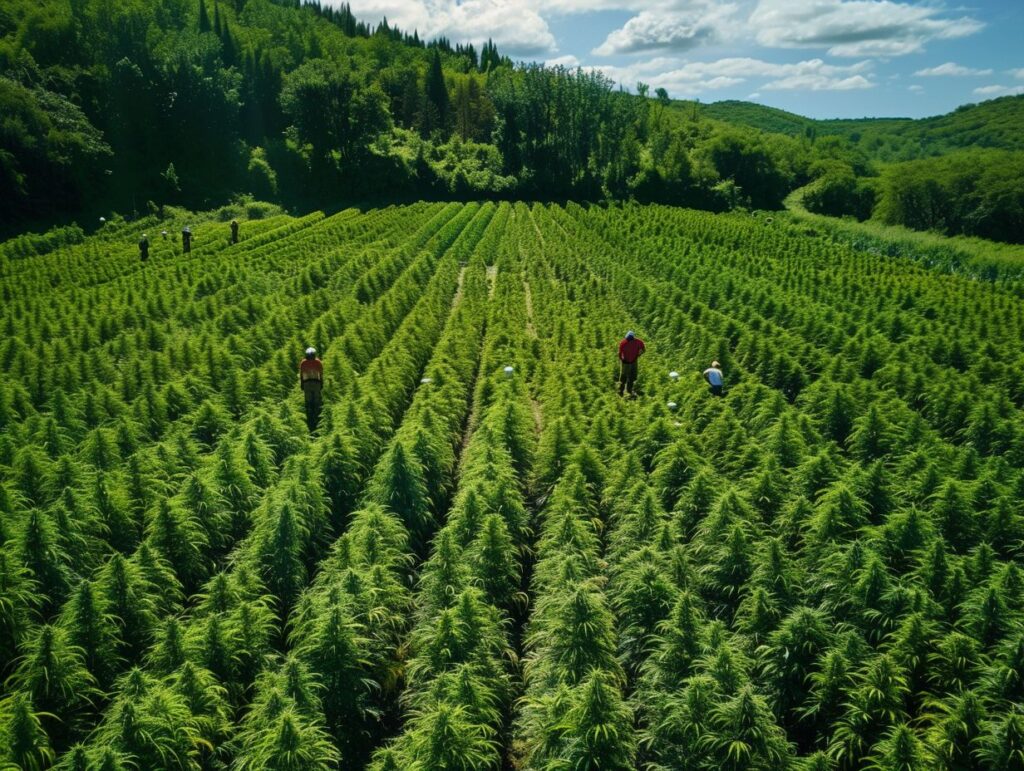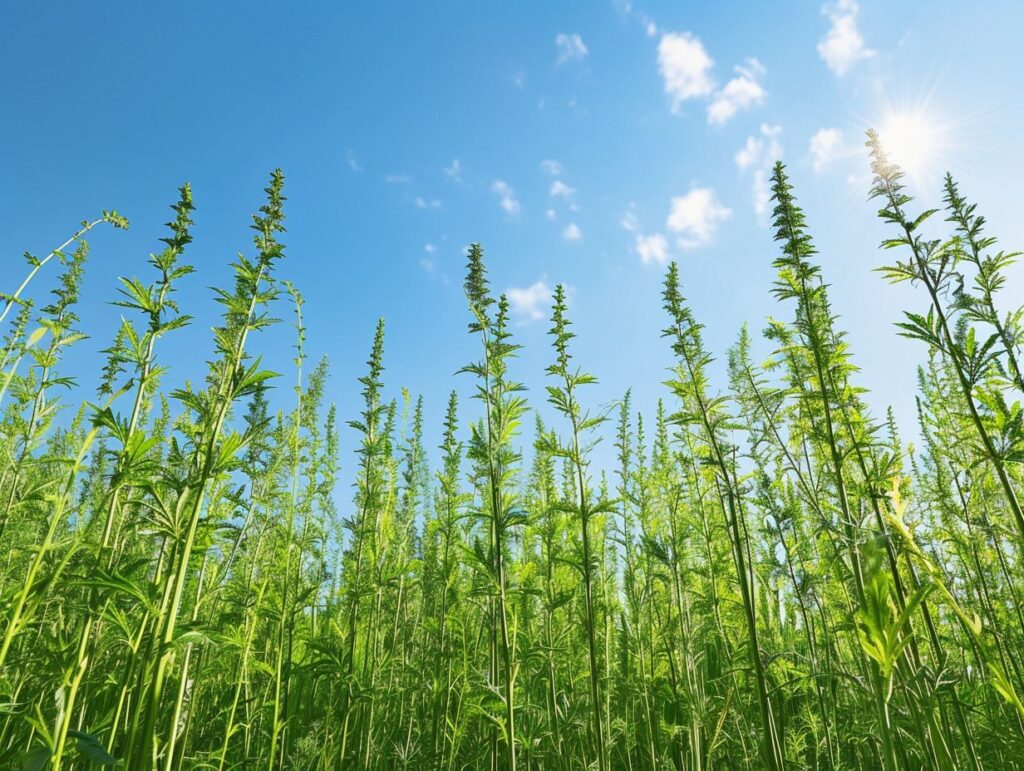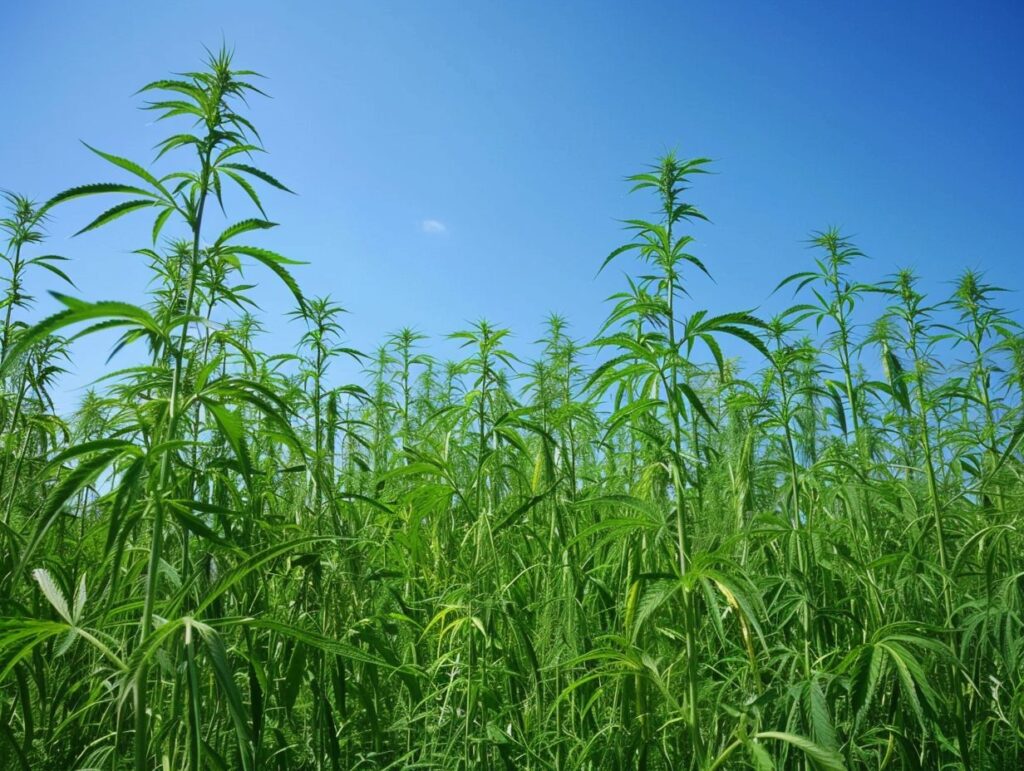Curious about hemp cultivation practices? This article covers all you need to know to successfully grow hemp, from soil requirements to pest and disease management.
Discover the history of hemp cultivation, the best soil types and nutrients needed, and how to prepare your soil for planting. Learn about common pests and diseases to watch out for, as well as natural and chemical pest management techniques.
Find out the best practices for planting, maintaining optimal growing conditions, and harvesting your hemp crop.
What is Hemp Cultivation?
Hemp cultivation refers to the process of growing and harvesting hemp plants for various purposes such as fiber, seed, or CBD production. It involves a series of agricultural practices that ensure the healthy growth and development of the hemp crop.
These practices are essential for sustainable agriculture as hemp is known for its versatility and eco-friendly properties. Organic farming techniques play a crucial role in hemp cultivation, emphasizing the use of natural fertilizers and pest control methods to maintain soil health and biodiversity. Crop rotation is often employed to prevent soil depletion and disease outbreaks, while proper irrigation and weed management help optimize crop yield. Harvesting techniques vary depending on the intended end product, whether for fiber production, seed processing, or extracting CBD oil.
What is the History of Hemp Cultivation?
The history of hemp cultivation dates back thousands of years, with evidence of its use in various civilizations for fiber, food, and medicinal purposes. Hemp farming has evolved over time, adapting to changing agricultural practices and environmental considerations.
Throughout history, hemp played a crucial role in the development of societies, providing a sustainable source of materials for textiles, oils, and therapeutic remedies. Cultivating hemp was a skill passed down through generations, with farmers meticulously tending to their crops.
This practice not only sustained communities but also had a positive impact on the environment, as hemp is known to enrich soil health and promote biodiversity. As farming techniques advanced, so did the cultivation of hemp, leading to increased yields and more efficient production methods.
What are the Soil Requirements for Hemp Cultivation?
The success of hemp cultivation largely depends on meeting specific soil requirements that are conducive to the growth of healthy hemp plants. Understanding the optimal soil conditions is crucial for maximizing crop yield and quality.
One key aspect of soil requirements for hemp cultivation is nutrient management. Hemp plants require a balanced mix of essential nutrients, including nitrogen, phosphorus, potassium, calcium, magnesium, and sulfur.
Maintaining proper nutrient levels in the soil is vital for healthy plant growth and development. Soil health plays a significant role in hemp cultivation. Healthy soil with high organic matter content promotes beneficial microbial activity, which aids in nutrient uptake by the plants.
The composition of the soil, its pH levels, and drainage are other critical factors that influence the overall quality of the soil for successful hemp production.
What Type of Soil is Best for Hemp Cultivation?
The best soil for hemp cultivation is well-drained loamy soil with a pH level between 6 and 7, rich in organic matter and essential nutrients. Optimal soil composition plays a vital role in promoting pest resistance and ensuring the overall health of hemp plants.
The pH level of the soil is crucial as it influences nutrient availability; a pH range of 6 to 7 is ideal for hemp growth. Well-drained loamy soil prevents waterlogging, which is essential to avoid root rot and other water-related issues. Organic matter in the soil provides essential nutrients and promotes microbial activity, contributing to better soil health. These components combined create an environment that naturally deters pests, reducing the need for chemical intervention and supporting sustainable hemp farming practices.
What are the Nutrient Requirements for Hemp Cultivation?
Proper nutrient management is essential for successful hemp cultivation, with plants requiring a balanced supply of essential nutrients such as nitrogen, phosphorus, and potassium. Understanding plant nutrition and implementing appropriate soil amendments are key factors in optimizing hemp growth.
These essential nutrients play critical roles in different aspects of hemp development. Nitrogen, for instance, is vital for leafy growth and overall plant vigor, while phosphorus supports root development and flowering. Potassium helps improve disease resistance and enhances nutrient uptake efficiency.
In addition to these macronutrients, hemp also benefits from micronutrients like calcium, magnesium, and sulfur to ensure healthy growth and optimal nutrient absorption. Maintaining soil fertility through organic matter additions, cover cropping, and proper pH levels is essential for sustaining long-term hemp production and maximizing yield potential.
How to Prepare the Soil for Hemp Cultivation?
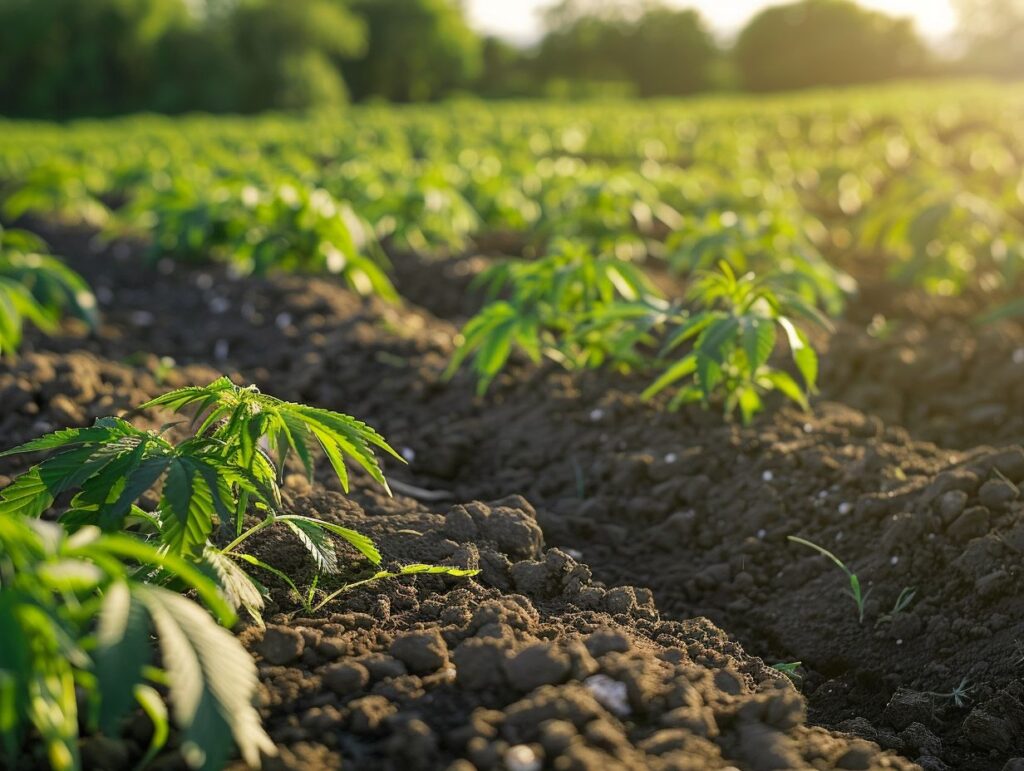
Preparing the soil for hemp cultivation involves thorough soil testing to assess nutrient levels and pH, followed by appropriate fertilization and amendments to enhance soil health. Ensuring the soil is properly conditioned sets the foundation for successful hemp growth.
To begin the process of soil preparation, start by conducting a comprehensive soil test to determine the existing nutrient composition and pH levels. This step is crucial as it helps in understanding the specific needs of the soil and the hemp plants that will be cultivated. Once the soil analysis results are obtained, select suitable fertilizers that address any deficiencies and adjust the pH if necessary. Incorporating organic matter, such as compost or well-rotted manure, can significantly improve soil structure and nutrient retention. Regularly rotating cover crops can also aid in enriching the soil with essential nutrients and reducing soil erosion.
How to Manage Pests and Diseases in Hemp Cultivation?
Effective pest and disease management is critical in hemp cultivation to ensure high crop yields and plant health. Implementing integrated pest management strategies and disease resistance practices are essential for minimizing the impact of pests and diseases on hemp crops.
Pest resistance plays a crucial role in safeguarding hemp plants from common pests like mites, aphids, and caterpillars. By cultivating hemp varieties with natural resistance to specific pests, farmers can reduce the need for chemical interventions.
Integrated pest management involves a combination of biological controls, cultural practices, and targeted pesticide use when necessary. Regular monitoring for signs of pest infestations and diseases allows for early detection and prompt treatment, preventing potential crop losses.
Prioritizing prevention through proactive pest and disease management practices can lead to healthier hemp plants and improved overall yield.
What are the Common Pests in Hemp Cultivation?
Common pests that can affect hemp cultivation include aphids, spider mites, and caterpillars, which can cause significant damage to hemp plants if not managed effectively. Regular pest monitoring and implementing appropriate control strategies are crucial for pest management.
Aphids are small, soft-bodied insects that feed on the sap of hemp plants, leading to stunted growth and distorted leaves. Spider mites, on the other hand, can cause yellow stippling on leaves due to their feeding behavior. Caterpillars can chew through leaves and flowers, affecting the overall plant health.
Effective pest monitoring techniques involve scouting fields regularly, inspecting plants for signs of infestation, and using sticky traps to capture flying pests. Implementing pest control strategies such as introducing natural predators or using botanical insecticides can help manage pest populations and protect hemp crops.
What are the Natural Pest Management Techniques for Hemp Cultivation?
Natural pest management techniques in hemp cultivation involve utilizing beneficial insects, natural predators, and biological control agents to regulate pest populations without the use of synthetic chemicals. These eco-friendly methods help maintain pest balance in the hemp ecosystem.
By encouraging the presence of natural enemies that feed on hemp pests, such as ladybugs, lacewings, and predatory mites, farmers can effectively reduce pest damage while avoiding the negative impacts of chemical pesticides on the environment and human health.
These beneficial insects act as biological control agents, preying on harmful pests like aphids, caterpillars, and mites, thereby promoting a sustainable and natural approach to pest management in hemp fields.
Integrating diverse plant species in and around hemp crops also attracts beneficial insects, enhancing biodiversity and strengthening the ecosystem’s resilience to pest outbreaks.
What are the Chemical Pest Management Techniques for Hemp Cultivation?
Chemical pest management techniques in hemp cultivation involve the use of pesticides, herbicides, and fungicides to control pest infestations and diseases. While these methods can be effective, they require careful application to minimize environmental impact.
- When using pesticides, growers must consider factors such as the type of pests targeted, application timing, and dosage to avoid unintended harm to beneficial insects and surrounding ecosystems.
- Herbicides play a crucial role in managing weed growth, but their indiscriminate use can lead to soil degradation and water contamination.
- Similarly, fungicides help prevent fungal diseases, but excessive or improper use may contribute to pesticide resistance and harm non-target organisms.
Therefore, adopting integrated pest management practices and employing these chemicals judiciously are essential for sustainable hemp cultivation.
How to Prevent and Manage Diseases in Hemp Cultivation?
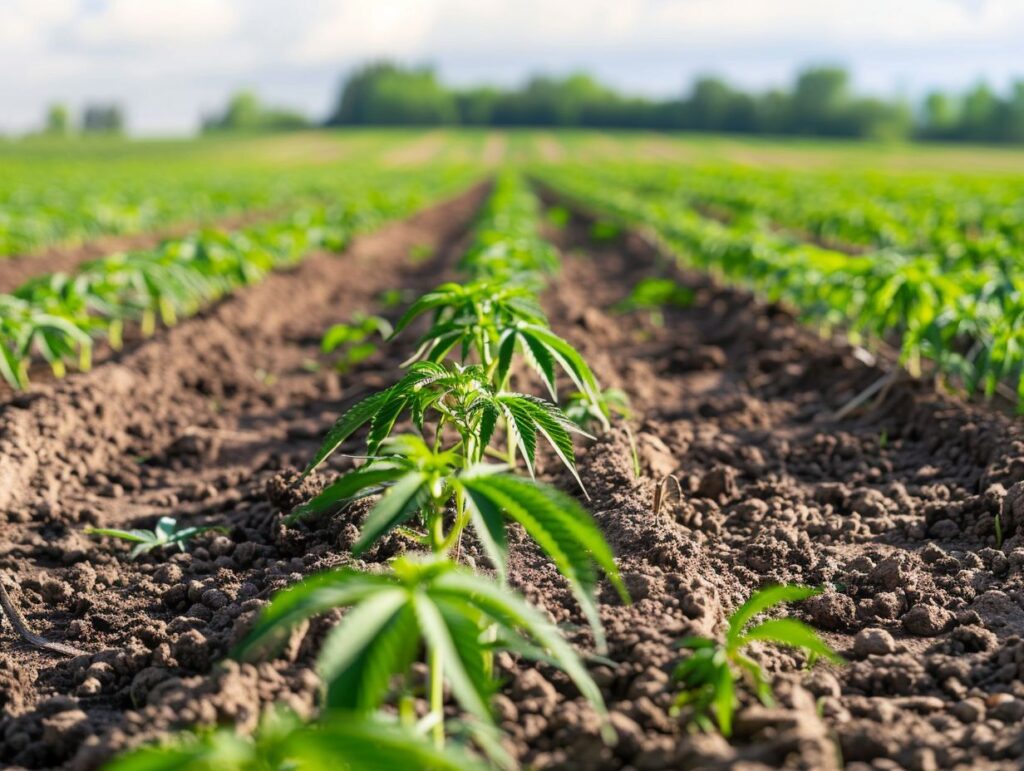
Preventing and managing diseases in hemp cultivation involves implementing control methods against fungal infections, adopting preventive measures, and timely treatment interventions to safeguard plant health. Disease resistance practices are key in mitigating the impact of diseases on hemp crops.
- By focusing on disease resistance, hemp farmers can lower the vulnerability of their crops to various pathogens, ultimately enhancing the overall crop yield and quality.
- Implementing crop rotation strategies can help break the disease cycle and reduce the buildup of pathogens in the soil.
- Incorporating resistant hemp varieties and spacing plants appropriately can further bolster the plant’s natural defenses against diseases, providing a more sustainable approach to disease prevention and management in hemp cultivation.
What are the Best Practices for Hemp Cultivation?
Adopting best practices in hemp cultivation is essential for maximizing crop protection, optimizing productivity, and enhancing overall yield quality. Implementing sustainable and agroecological approaches contributes to the long-term success of hemp farming.
By integrating sustainable practices into hemp cultivation, farmers can significantly reduce the reliance on synthetic inputs, minimize environmental impact, and foster biodiversity on their farms. Implementing crop rotation, cover cropping, and natural pest control methods not only improve soil health and fertility but also enhance the resilience of the crop to diseases and pests. Striving for a balance between ecological processes and agricultural productivity leads to sustainable yields and fosters a healthier farming ecosystem.
What is the Best Time to Plant Hemp?
The best time to plant hemp typically falls in the spring season when the soil temperature reaches around 50°F to 60°F, ensuring optimal growth conditions and reducing the risk of plant diseases. Rotating hemp crops with other plants helps maintain soil health and minimizes disease pressures.
During spring planting, farmers can take advantage of the soil’s warming trend, which is crucial for hemp seed germination and early root development. The mild temperatures promote vigorous growth, setting the stage for a successful harvest later in the year. By strategically rotating hemp cultivation with other crops like legumes or grains, farmers can break disease cycles and improve soil structure. This practice reduces the build-up of pathogens specific to hemp, reducing the need for chemical interventions and fostering a more sustainable farming ecosystem.
How to Maintain Optimal Growing Conditions for Hemp?
Maintaining optimal growing conditions for hemp involves efficient irrigation practices, effective weed control measures, and promoting soil health through sustainable agricultural practices. Environmental stewardship is key to ensuring a healthy and thriving hemp crop.
Implementing proper irrigation techniques is crucial to provide hemp plants with the necessary water without over-saturating the soil, which can lead to root rot and other issues. Drip irrigation systems or soaker hoses can help deliver precise amounts of water directly to the plant roots, conserving water and reducing the risk of fungal diseases.
In terms of weed management, practicing crop rotation and mulching can help suppress weed growth without the need for harmful chemical herbicides. Environmental conservation practices such as cover cropping and minimizing tillage not only help in weed control but also promote soil health by reducing erosion and improving organic matter content.
What are the Harvesting and Post-Harvesting Practices for Hemp?
Harvesting and post-harvesting practices for hemp involve meticulous planning to ensure optimal crop yields and quality. Utilizing cover crops and crop protection measures post-harvest helps maintain soil fertility and prepares the field for the next planting season.
It is crucial to harvest hemp at the right time to maximize cannabinoid content and prevent degradation of the plant. Timely harvesting ensures peak potency and quality in extracted compounds. Post-harvest, protecting the crop from pests and diseases is vital to safeguard the yield. Cover crops play a significant role in preserving soil health by preventing erosion and adding nutrients back into the soil. This cyclical method aids in sustainable farming practices, enhancing the overall productivity and longevity of the hemp cultivation process.
Frequently Asked Questions
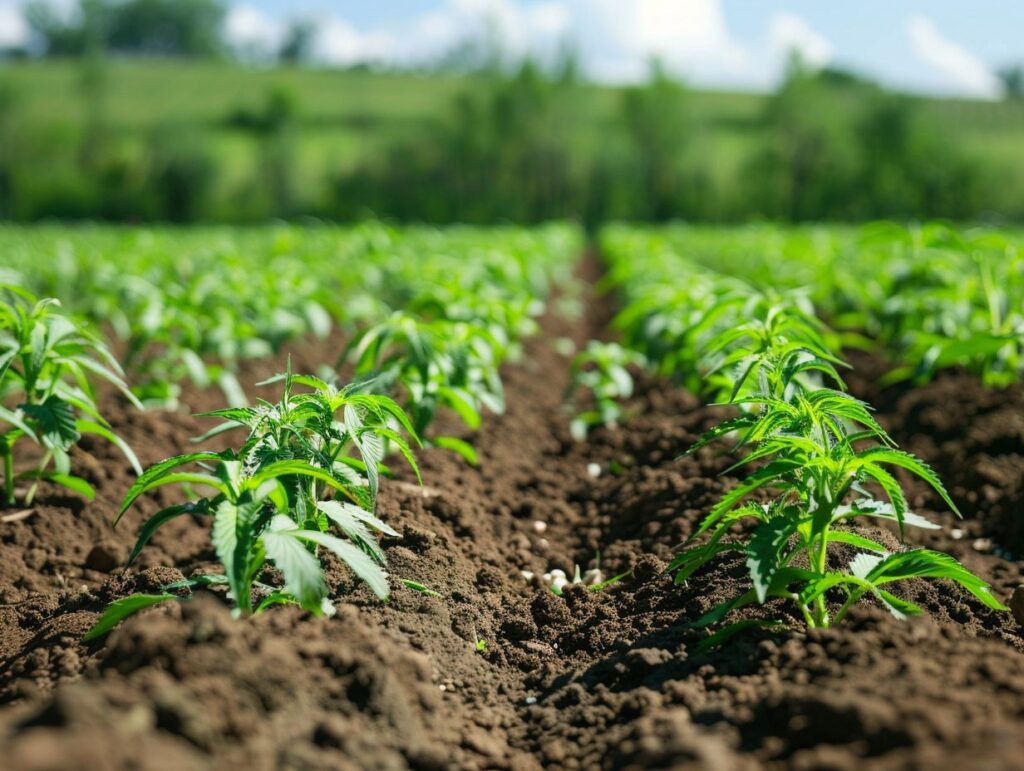
What are the soil requirements for successful hemp cultivation?
Hemp plants require well-draining, fertile soil with a pH between 6.0-7.5. It is also important to have a good balance of nutrients, including nitrogen, phosphorus, and potassium.
How can I improve the soil quality for hemp cultivation?
You can improve the soil quality by adding organic matter, such as compost or manure, to the soil before planting. This will help provide essential nutrients and improve the soil’s structure and water retention.
What are some common pests and diseases that can affect hemp plants?
Some common pests that can affect hemp plants include aphids, spider mites, and cutworms. Diseases such as powdery mildew and root rot can also pose a threat to hemp plants.
How can I prevent pests and diseases from damaging my hemp crop?
One way to prevent pests and diseases is by practicing good crop rotation to avoid buildup of soil-borne pathogens. Additionally, using natural pest control methods, such as introducing beneficial insects, can help keep pest populations in check.
Can I use chemical pesticides on my hemp plants?
It is generally not recommended to use chemical pesticides on hemp plants, as they can leave harmful residues on the plant that may affect its quality. It is best to use natural pest control methods or consult with a professional for safe and effective alternatives.
What are some organic options for pest and disease management in hemp cultivation?
Some organic options for pest and disease management include using neem oil, garlic spray, and diatomaceous earth. These can help control pests and diseases without leaving harmful residues on the plant. It is important to always follow the recommended application rates and safety precautions when using any type of pest control.

